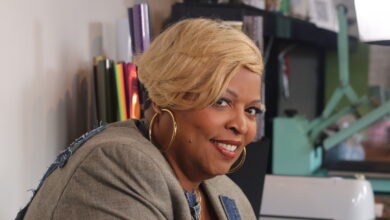Palm trees escaped Hurricane Ian’s fury in Fort Myers and Southwest Florida : NPR


Royal palm trees line both sides of McGregor Boulevard in Fort Myers for miles. Nearly all of the trees survived Hurricane Ian.
Saul Martinez for NPR
hide caption
toggle caption
Saul Martinez for NPR

Royal palm trees line both sides of McGregor Boulevard in Fort Myers for miles. Nearly all of the trees survived Hurricane Ian.
Saul Martinez for NPR
FORT MYERS, Fla. — When a hurricane assaults the coast, as Ian did to Southwest Florida, flip on the TV and the images the cameras have to show are palm trees flailed by the furious winds. The obligatory footage is supposed to be visual evidence of nature’s fury. And that it is. But a palm tree standing up to a hurricane is just as much a symbol of the resilience of life, particularly so in Fort Myers, the City of Palms.
I finally counted them up: Ian is the 20th hurricane I’ve covered for NPR —either the big blow or the aftermath. My first was the monster, Hugo, whose eye passed directly over me in Charleston, S.C., in 1989.
How many times I’ve sat in a sweltering hotel room, no power, talking to the News Desk, and outside the shuddering windows are the iconic palms, their trunks straining in the gale, their fronds flapping wildly behind them like the hair of a damsel in distress.
But the palm trees rarely break!

Artist Megan Kissinger poses for a photograph at her home in Fort Myers.
Saul Martinez for NPR
hide caption
toggle caption
Saul Martinez for NPR
“The palm tree gets as much wind as all the other trees, but it knows how to bend, it knows how to flex,” says Megan Kissinger, a wildlife artist and native Floridian who lives and paints palms in Fort Myers. “And I think Floridians, if you’ve lived here long enough — and I’ve been through a few Category 5s, they’re pretty terrifying — but you wake up the next morning and you do a count of all your family members and you say, everyone’s here. OK, let’s get to work cleaning up.”
Resilience — human and arboreal.
As it happens, the graceful gulf-side city of Fort Myers will now be known for taking a direct hit from Category 4 Ian. But it’s also an apt locale for an ode to the palm tree.

Wild parrots sit on palm trees on McGregor Boulevard.
Saul Martinez for NPR
hide caption
toggle caption
Saul Martinez for NPR

Wild parrots sit on palm trees on McGregor Boulevard.
Saul Martinez for NPR
“Fort Myers’ nickname is the City of Palms,” says Karen Maxwell, who meets me at the back gate of the Edison-Ford Winter Estates. She works there as a horticulturist and teaches a popular class called Palm Reading. The lush grounds house the stately winter homes of Thomas Edison and Henry Ford, as well as a research lab, botanical gardens, museum and garden shop. The property backs up to the Caloosahatchee River.
There is also a palmetum. “Think arboretum,” Maxwell says, “but with palms.”
“Foxtail palm, bottle palm, buccaneer palm, thatch palm …” she intones as she inventories the young trees before her. “Christmas palm, pembana palm, seashore palm, macaw palm, black palm. And they all did fine.”
The Florida state tree is the sabal palm. But the most famous species in this town is the royal palm. Maxwell stands next to a stout royal that has to be 6 feet in circumference.

Horticulture specialist Karen Maxwell leans against a royal palm tree. “What makes these trees outstanding in a hurricane is this tree can bend almost 40 to 50 degrees and not break.”
Saul Martinez for NPR
hide caption
toggle caption
Saul Martinez for NPR

Horticulture specialist Karen Maxwell leans against a royal palm tree. “What makes these trees outstanding in a hurricane is this tree can bend almost 40 to 50 degrees and not break.”
Saul Martinez for NPR
“This is our royal palm and if you’d come up to this you’d think you’re knocking on a column of solid cement,” she says, knocking on the trunk. “What makes these trees outstanding in a hurricane is this tree can bend almost 40 to 50 degrees and not break. Because it has no branches. It is not rigid.”
The palm tree is a monocot, closer to the grass family than broadleaf trees. It grows from the top. The inside is not hard and there are no tree rings. It’s a collection of thousands of vascular straws that carry nutrients and water from the ground to the crown.
Palm trees come in more than 2,500 species, mostly occurring in the vast warm regions between the Tropic of Cancer and the Tropic of Capricorn. They love a good tempest.

Left: At the home of artist Megan Kissinger in Fort Myers is a ponytail palm. Top right: The trunk of a sabal palm (cabbage tree) can be seen. Bottom right: The base of a screw palm tree is visible at Kissinger’s home.
Saul Martinez for NPR
hide caption
toggle caption
Saul Martinez for NPR
“All of them are adapted for wind, many of them are adapted for flooding, and many are also adapted for salt,” Maxwell says. In short, millennia of natural selection have perfectly adapted the palm tree for an event like Hurricane Ian. “They have the tools to survive,” Maxwell says, grinning appreciatively.
After a hurricane, the ground is often littered with brown palm fronds. While it’s a chore for the city, it’s a good thing for the trees. The wind has pruned the dead fronds. The live, green fronds are tough and aerodynamic and seldom break off. If they do, they grow back.
Amid raked-up heaps of dead fronds, Phil Buck sits on the trunk of a massive royal that toppled in the storm. He’s a board-certified master arborist who’s in charge of the tree division for Crawford Landscaping, based in Naples. He’s overlooking McGregor Avenue in Fort Myers, which is famously lined with royal palms.

Horticulture specialist Phil Buck stands near rows of royal palm trees in Fort Myers. “As you can see, they’re pretty beat up,” Buck says. “But they’re still standing.”
Saul Martinez for NPR
hide caption
toggle caption
Saul Martinez for NPR

Horticulture specialist Phil Buck stands near rows of royal palm trees in Fort Myers. “As you can see, they’re pretty beat up,” Buck says. “But they’re still standing.”
Saul Martinez for NPR
“As you can see, they’re pretty beat up,” Buck says. “But they’re still standing.”
McGregor Boulevard — bordered with some 1,800 royal palms, some taller than 75 feet — is how Fort Myers came to be called the City of Palms.
“Some of these trees along McGregor, I don’t know the exact date but they can live to 100 years or more,” says Buck. “And we’ve had countless storms, none as severe as Hurricane Ian. But obviously they’re still here. They’re still alive and kicking.”
The English statesman and scientific philosopher Francis Bacon made an observation that well suits the brilliant adaptability of the palm tree: “We cannot command nature except by obeying her.”

The base of a palm tree uprooted by Hurricane Ian in Fort Myers. It’s one of the few palm trees to be knocked over in the storm.
Saul Martinez for NPR
hide caption
toggle caption
Saul Martinez for NPR

The base of a palm tree uprooted by Hurricane Ian in Fort Myers. It’s one of the few palm trees to be knocked over in the storm.
Saul Martinez for NPR
Source link





